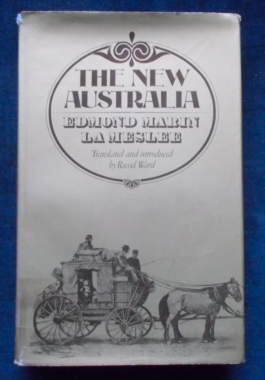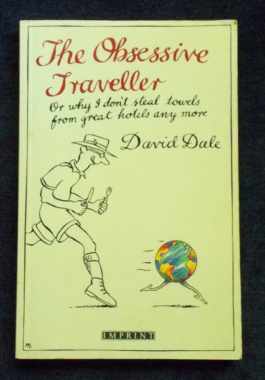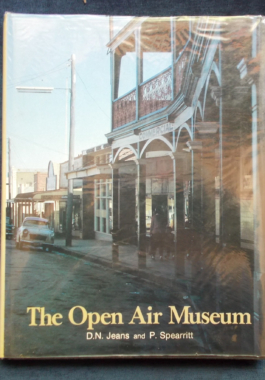-
 Three centuries ago, most wealth was stored and exchanged as gold and silver coins. At the beginning of the eighteenth century, John Law stepped onto the world's stage: striking, charismatic and a mathematical genius. He developed the idea that if money were lent in the form of paper, properly backed up by proper assets, then the same money could be lent several times over. Despite opposition, he won royal backing to set up the first French bank to issue paper currency. Epic drama followed as he turned the financial world topsy turvy. A philanderer, a gambler and a murderer - the man who gave us paper money.
Three centuries ago, most wealth was stored and exchanged as gold and silver coins. At the beginning of the eighteenth century, John Law stepped onto the world's stage: striking, charismatic and a mathematical genius. He developed the idea that if money were lent in the form of paper, properly backed up by proper assets, then the same money could be lent several times over. Despite opposition, he won royal backing to set up the first French bank to issue paper currency. Epic drama followed as he turned the financial world topsy turvy. A philanderer, a gambler and a murderer - the man who gave us paper money. -
 If Moses really existed, he would be arguably history's most influential figure, the founder of the great monotheistic religions of the modern world. But was he a real person and, if so, when did he live? This is a journey into biblical times, using archaeological evidence as well as a new reading of the Old Testament to recreate early Hebrew history. Phillips shows how much of the Old Testament can be corroborated, from the conquest of Canaan to the seven plagues of Israel. But above all, he uncovers the identity of Moses, unpicking the confused chronology of Exodus to reveal that Moses was not one but two men, living at different times - a Hebrew priest called Kamose who first discovered God and an Egyptian prince called Tuthmose who led the Israelites out of slavery. And he locates one of the most holy places in the world, the Mountain of God, which is not today's Mount Sinai but another, more ancient religious site. Illustrated with black and white photographs.
If Moses really existed, he would be arguably history's most influential figure, the founder of the great monotheistic religions of the modern world. But was he a real person and, if so, when did he live? This is a journey into biblical times, using archaeological evidence as well as a new reading of the Old Testament to recreate early Hebrew history. Phillips shows how much of the Old Testament can be corroborated, from the conquest of Canaan to the seven plagues of Israel. But above all, he uncovers the identity of Moses, unpicking the confused chronology of Exodus to reveal that Moses was not one but two men, living at different times - a Hebrew priest called Kamose who first discovered God and an Egyptian prince called Tuthmose who led the Israelites out of slavery. And he locates one of the most holy places in the world, the Mountain of God, which is not today's Mount Sinai but another, more ancient religious site. Illustrated with black and white photographs. -

Originally published in 1883, La Meslee saw what Australian and English eyes missed or merely took for granted about the new colony. Melbourne Cup Day; a politician's maiden speech; a coach journey along what is now the Hume Highway; the meeting of two French Counts in Townsville - all these events and more are brought to life again, presenting a fascinating picture of a developing society full of vitality and brash self-confidence. Illustrated with beautiful black and white sketches.
-
 Anthony Trollope's claim that Aussies were great boasters and blowers was refuted by the author in 1883: "Ah, dear Mr. Trollope! Let them have their say. They are not so far wrong after all, for no country in the world, not even in America in proportion to its population, can show such astonishing progress...in the last quarter of a century...They are a young people with the faults of youth..." Originally published in 1883, La Meslee saw what Australian and English eyes missed or merely took for granted about the new colony. Melbourne Cup Day; a politician's maiden speech; a coach journey along what is now the Hume Highway; the meeting of two French Counts in Townsville - all these events and more are brought to life again, presenting a fascinating picture of a developing society full of vitality and brash self-confidence. Illustrated with beautiful black and white sketches.
Anthony Trollope's claim that Aussies were great boasters and blowers was refuted by the author in 1883: "Ah, dear Mr. Trollope! Let them have their say. They are not so far wrong after all, for no country in the world, not even in America in proportion to its population, can show such astonishing progress...in the last quarter of a century...They are a young people with the faults of youth..." Originally published in 1883, La Meslee saw what Australian and English eyes missed or merely took for granted about the new colony. Melbourne Cup Day; a politician's maiden speech; a coach journey along what is now the Hume Highway; the meeting of two French Counts in Townsville - all these events and more are brought to life again, presenting a fascinating picture of a developing society full of vitality and brash self-confidence. Illustrated with beautiful black and white sketches. -
 A new class of LAPD recruits are about to start their training on the streets of Los Angeles. But time is no friend to these particular new centurions. The Los Angeles 'hoods are burning with rage, a training ground no longer - the streets are a killing ground. Serge Duran, Gus Plebesly, and Roy Fehler are classmates at the police academy and take to the streets after graduation. But will being police officers be as they thought? Follow their lives for five years, starting from their police academy days and into the Watts riots of 1965. Duran struggles with his Mexican heritage. Plebesly deals with being a coward. And Fehler's somewhat of a blusterer - until something changes his point of view. The author is a former police officer.
A new class of LAPD recruits are about to start their training on the streets of Los Angeles. But time is no friend to these particular new centurions. The Los Angeles 'hoods are burning with rage, a training ground no longer - the streets are a killing ground. Serge Duran, Gus Plebesly, and Roy Fehler are classmates at the police academy and take to the streets after graduation. But will being police officers be as they thought? Follow their lives for five years, starting from their police academy days and into the Watts riots of 1965. Duran struggles with his Mexican heritage. Plebesly deals with being a coward. And Fehler's somewhat of a blusterer - until something changes his point of view. The author is a former police officer. -
 Moving into an unfurnished house, John uses the ads in newsagents' windows to buy things like a bed and a settee. On impulse, one day, he replies to an advert for a psychic masseur named Lucy, who tells him some home truths as he sits on her settee in his underpants. So begins a year of self-discovery and an obsession with newsagents' windows, taking John to a shoe-exhibition, an Ayckbourn play, to a wrestling match. He becomes the owner of a man's entire video collection, a clapped-out Ford Escort - and discovers a community of a bygone age. Looking to improve his German, he meets a pretty German girl named Leni...
Moving into an unfurnished house, John uses the ads in newsagents' windows to buy things like a bed and a settee. On impulse, one day, he replies to an advert for a psychic masseur named Lucy, who tells him some home truths as he sits on her settee in his underpants. So begins a year of self-discovery and an obsession with newsagents' windows, taking John to a shoe-exhibition, an Ayckbourn play, to a wrestling match. He becomes the owner of a man's entire video collection, a clapped-out Ford Escort - and discovers a community of a bygone age. Looking to improve his German, he meets a pretty German girl named Leni... -
 Carol Gino spent sixteen years of her life as a nurse. When her marriage fell apart she had two kids to support and a life to piece back together. She trained to be a nurse. The stark realities of the hospital ward had little to do with the image of soothing angels of mercy presented in magazines and movies. It was back breaking work always in the presence of death and disease and heart breaking conflict between the demands of home and a growing commitment to help and healing. A novelised autobiography.
Carol Gino spent sixteen years of her life as a nurse. When her marriage fell apart she had two kids to support and a life to piece back together. She trained to be a nurse. The stark realities of the hospital ward had little to do with the image of soothing angels of mercy presented in magazines and movies. It was back breaking work always in the presence of death and disease and heart breaking conflict between the demands of home and a growing commitment to help and healing. A novelised autobiography. -

Or Why I Don't Steal Towels from Great Hotels Anymore. This is not a travel book, exactly, and it's not a book about hotels. It's a book about obsessions and the need to let our obsessions guide us to discoveries...Travel can be the supreme pleasure in life but only if we undertake an interior journey along with our exterior voyage.Among other topics, Dale covers: Why men want to read maps and women want to ask the way; how to stop a taxi driver from talking to you; where to find the guidebook that suits your personality; the how, what and why of souveniring from Great Hotels; whether you should be in love with your travelling companion; where to go star-spotting for dead celebrities; how to enjoy fake travel and pseudo nostalgia; the best and worst waiters, streets, train dining cars, restaurants and small museums in the world; and why shopping is a waste of good siesta time. With amusing sketches by Matthew Martin.
-
 A volume covering the cultural landscape of New South Wales through how and what we built, and the importance of preserving the examples of architecture we can before development and demolition removes them forever: the evolution of our architecture; how economic development via immigration and capital inflow played a role; the influence of the pastoral, wheat and dairy industries; the growth and decline of country towns; how the railways, road building and transport altered the where and when of accommodation establishments; the proliferation of the colliery towns - and how Sydney went from being a town to being a city. Black and white photographs.
A volume covering the cultural landscape of New South Wales through how and what we built, and the importance of preserving the examples of architecture we can before development and demolition removes them forever: the evolution of our architecture; how economic development via immigration and capital inflow played a role; the influence of the pastoral, wheat and dairy industries; the growth and decline of country towns; how the railways, road building and transport altered the where and when of accommodation establishments; the proliferation of the colliery towns - and how Sydney went from being a town to being a city. Black and white photographs.


